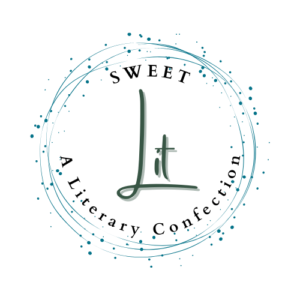The Essay Goes to the Moon: An Interview with Dinty W. Moore.
When I first heard about this interview, my writer wife and I left our office posts at the University of South Florida and drove to the Chili’s on Fowler Avenue. We ordered a round of tequila club sodas and lime. That’s our drink, the MFA. They were buy one get one free. We said things like Dinty Fucking Moore and I know.
Yes, I was fangirling, hard. But for a good reason. Dinty W. Moore is a key player in the conversation of creative nonfiction. He is the director of Ohio University’s Creative Writing Program, a prolific author, and the founding editor of Brevity: A Journal of Concise Literary Nonfiction.
I’ve been reading Brevity since I was a teenager. Back then I didn’t ask a lot of questions. I took the sepia toned image on the journal’s About page at face value. Yes, for longer than I’d like to admit, I believed Moore to be a barefoot, mustachioed fellow who took staff retreats out on the old canoe. How could I not be smitten?
The next morning I was laughing in my office to Moore’s latest collection, Dear Mister Essay Writer Guy: Advice and Confessions on Writing, Love, and Cannibals. This writing guide uses humor as a means of discussing craft and insight. Moore responds to questions asked by twenty contemporary novelists with form-bending essays. Much like an essay, the book engages readers and encourages critical thinking rather than providing neat answers.
***
Karissa Womack: When you are not sipping martinis with famous novelist Nelson Algren, what drink do you to prefer to sop up with your cocktail napkins? More specifically, what were you drinking when putting together your essay, “The Napkin Is the Message”?
Dinty W. Moore: The napkins came from Casa Nueva, a truly funky, worker-owned, locavore-focused marvel of a restaurant. I drew most of the napkin essay sitting at the bar drinking Weasel Boy IPA. The wonder of the place is that you can be sitting at the bar drawing on cocktail napkins for two hours and no one will look at you as if you were odd. It is a place where odd is normal, and art is everywhere. I was lucky enough to do my book launch in the same bar, with a cocktail-drawing contest and other shenanigans.
KW: In response to a question from Judith Kitchen, you write: “The difference between the story and an essay is that the storyteller just wants to entertain the reader, while the essayist has been to graduate school.” I read in your bio that you have been to graduate school. I’m in graduate school too, and I aspire to be an essayist. But, I noticed that your essays are entertaining as well. Do you have any advice for writers who need to stop taking themselves so seriously?
DWM: Graduate school is a wonderful thing, as is all learning and any moment that a mind opens. So my quip above is meant with fond sarcasm. Still, I do encounter too many grad school writers who formulate the theory of the essay they are writing before they’ve even finished two drafts. It takes me at least five drafts to determine what my essay is about, and fifteen more to decipher how it is going to work itself out. The primary responsibility of a writer is to keep the reader awake, and the best way to do that is to tell a good story, vividly. Writing while simultaneously imagining what theorists and critics might say about your experiments with narrative is like dancing in wet cement.
So my advice?
Think story. Think, what is the reader getting out of this? Think, where am I putting the reader to sleep? Think, am I writing for myself or for others? And then revise as if someone was going to lock you away for twenty years if your writing was not lighting and delighting a reader’s neural pathways.
KW: I applaud your focus on revision. I’m curious; at what stage do you let other writers into your process? If you work with a writing partner or group, do you share a draft sometime after you’ve discovered what the work is about, or much later when the writing feels artful on sentence-level?
DWM: My answer has changed over the course of my writing career. Early on, I would float third or fourth drafts past people, with the explicit or implicit question being, ‘Is there something here? Should I keep working on it, or is the idea already boring you?’ I’m more confident now, and usually wait until I have completed my 15th or 20th draft before I show something to my main reader (also my wife). So yes, I like to have developed the idea (both situation and story) of an essay as well as polished the sentences before showing it to anyone. There are always a few more drafts after that process, but not as many as before.
I do strongly believe in having someone look at an essay before it goes out to a magazine though. There is always something I can’t see until another reader points it out to me. We all have our blind spots.
KW: In a self-interview with TNB, you mention nudging essayist Barrie Jean Borich to ask you a question about Google Maps. Were there any other questions you wish you’d been asked in Dear Mister Essay Writer Guy?
DWM: I was thoroughly charmed by the questions that were sent my way, so it is hard to imagine what might have been missed. The endeavor feels a bit like trying to conjure up the four additional children you would have had if you had seven instead of three. The possibilities are endless.
But I’m ducking the question. So let me duck it some more: I’m fascinated more and more lately by the artistic process: not just the writing process, but the artistic process as it spans the various art forms, from sculpture, to choreography, to painting, to filmmaking, to fashion design. I’m convinced writers can learn plenty from painters about how to harness an idea, and how to transform it, and I suspect the learning might go the other way as well. So yes, a question along those lines would have been nice.
But the questions I would look forward to most eagerly are those I can’t even imagine.
KW: Since you like to doodle, can you draw where you think the essay is going?
DWM:

KW:




